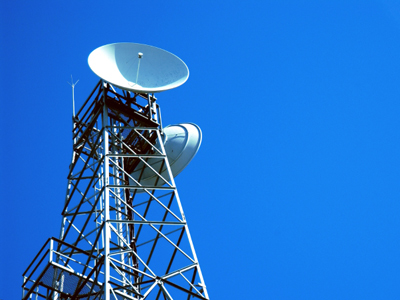This GCSE Physics quiz takes a second look at properties of waves. Waves transfer energy from one location to another by vibrating a medium. Some types of wave require a material medium but others don't, they are vibrations in the electric and magnetic fields that can be found throughout the known universe. Understanding how waves work has been very useful to humans as we now use them in many different ways.
The particles of a medium are closer together as a compression is passing and further apart as a rarefaction passes. Some longitudinal waves can carry enough energy to break things apart - ultrasound for example. This is used in medicine to break up painful stones that have developed in the gall bladder or the kidneys. Once they have been shattered by the ultrasound, the remaining particles are small enough to be excreted naturally by the body. In hospitals and factories, ultrasound cleaners are used. These are small tanks containing the cleaning fluid, into which ultrasound is fired. This vibrates the object to be cleaned so that the dirt is dislodged from it without having to physically wipe the surface. It is very useful where the object has a complex shape or has difficult to reach parts.
Transverse waves travel as a sequence of 'wiggles' in the medium, in other words, they displace the particles of the medium side-to side or up and down (depending on where you are viewing the wave from). Water waves are transverse and displace the water molecules vertically, so you can easily see the crests and troughs of the passing wave. As a water wave passes, the particles stay where they are (not quite perfectly true but close enough for GCSE). It is the energy that travels, not the particles of the medium. That is also true for longitudinal waves, after the waves have passed, the particles are more or less in the same position as where they were before the wave arrived.
Both types of wave travel in straight lines. They can be made to turn corners by reflecting and refracting them and through the process of diffraction. When a wave hits a surface that is opaque to that type of wave, some will be absorbed and the energy it carries transferred into a different form. The rest will bounce off, but travelling in a different direction. Under certain circumstances, all of the energy carried by the wave can be absorbed or reflected. The law of reflection is simple. When a wave is reflected, the angle at which it hits the reflecting surface is the same as the angle at which it leaves the surface. So if you want to turn a wave through 90°, the wave must hit the surface at 45°.
When a wave meets a boundary between two different media that are transparent to that wave, it will change direction as it crosses from one medium into the other. This is called refraction. The exceptions to this rule are if the wave hits the surface at exactly 90° (it continues in the same direction) or at an angle greater than the critical angle (it will be reflected from the boundary and remain in the original medium).
Where a wave passes through an opening that is comparable in size to the wavelength of the wave, diffraction will occur. Diffraction also occurs where a wave meets an object that is comparable in size to its wavelength. Diffraction causes the energy of the wave to be propagated in a semicircular fashion and is partly the reason that sound waves can be detected round corners.
For the GCSE, you need to know the wave equation, v=fλ (wave speed = frequency multiplied by the wavelength). In the GCSE, you will need to be able to use it to work out the frequency and wavelength as well as the wave speed. Be prepared to deal with very large and very small numbers, often written down as powers of ten. In the SI system, wave speed is in metres per second, the frequency in hertz and the wavelength in metres. Sometimes, the examiners will quote the figures in different units. You can either convert them to the correct SI units or simply give the answer in units appropriate to those given in the question. Since waves travel in straight lines, waves have a velocity rather than a speed but the two terms are used interchangeably at this level of physics.








